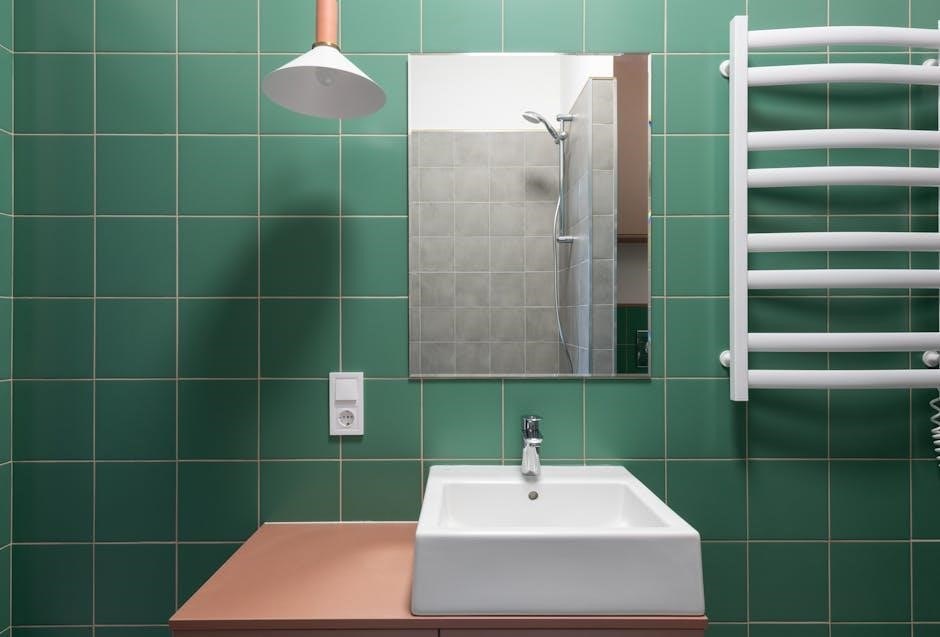Posterior hip precautions are essential guidelines to prevent dislocation after hip replacement surgery. They involve avoiding specific movements, such as bending past 90 degrees, crossing legs, or twisting inward. These precautions help protect the new hip joint and promote proper healing.

Importance of Following Hip Precautions
Following posterior hip precautions is crucial for a successful recovery after hip replacement surgery. These guidelines help prevent complications such as dislocation, nerve damage, or improper healing of the hip joint. Dislocation is a significant risk in the early stages of recovery, as the soft tissues and muscles around the hip need time to strengthen and stabilize the new joint.
By adhering to the precautions, patients can minimize the risk of these complications and ensure proper alignment and healing of the hip. Ignoring these guidelines can lead to serious setbacks, requiring additional surgery or prolonged rehabilitation. Compliance with the precautions demonstrates a commitment to protecting the investment made in hip replacement surgery and achieving the best possible outcomes. Patients are typically advised to follow these precautions for 6–8 weeks post-operatively, or until their surgeon or therapist confirms it is safe to discontinue them.
Ultimately, following hip precautions is a critical step in regaining mobility, reducing pain, and enjoying a full recovery. It requires patience and careful attention to the instructions provided by healthcare professionals. Proper adherence ensures a safer and more effective healing process.

Specific Posterior Hip Precautions
Posterior hip precautions include avoiding movements that could dislocate the new hip, such as bending past 90 degrees, crossing legs, or inward rotation. These guidelines are tailored to protect the hip joint during the healing process.
3.1. Avoiding Bending Past 90 Degrees
Avoiding bending past 90 degrees is a critical posterior hip precaution to prevent dislocation. This means not leaning forward at the hips beyond a right angle, as this can strain the hip joint. Activities like tying shoes, picking items from the floor, or reaching low surfaces should be avoided. Patients are advised to use assistive devices, such as reachers or long-handled shoehorns, to minimize bending. Sitting in chairs with adequate support and avoiding low-seated furniture can also help maintain proper posture. Bending restrictions apply to both the surgical and non-surgical sides to ensure overall hip stability. This precaution is especially important during the initial recovery phase, typically lasting several weeks, until the hip joint heals sufficiently. By adhering to this guideline, patients reduce the risk of complications and promote a smoother recovery process.

3.2. Preventing Leg Crossing
Preventing leg crossing is another essential posterior hip precaution to minimize the risk of dislocation. Patients should avoid crossing their legs at the knees or ankles, as this can cause the hip joint to rotate inward, potentially leading to instability. This includes avoiding the “figure-4” position, where one leg rests on the other thigh. Leg crossing can occur in various positions, such as sitting, lying down, or even during daily activities like dressing. To prevent this, patients are advised to keep their legs separated or slightly apart, especially when sitting or lying on their side. Using a pillow between the legs while lying on the side can help maintain proper alignment and prevent accidental crossing. Additionally, patients should avoid crossing their legs while sitting in chairs or vehicles, as this can also strain the hip joint. Consistently following this precaution helps ensure the hip heals properly and reduces the likelihood of post-surgical complications. By being mindful of leg positioning, patients can safeguard their recovery and achieve a successful outcome. This guideline is particularly crucial during the early stages of recovery, when the hip joint is most vulnerable.

3.3. Avoiding Inward Rotation and Twisting
Avoiding inward rotation and twisting is a critical aspect of posterior hip precautions to prevent dislocation and ensure proper healing. Patients should refrain from turning their affected leg inward, as this can strain the hip joint and increase the risk of complications. This includes avoiding movements where the knees or toes point toward each other or inward. Twisting the hip, such as when turning to pick something up or reaching across the body, should also be avoided. These precautions apply to both sitting and lying down positions. For example, when lying on the side, patients should keep their legs straight or slightly bent with a pillow between them to prevent inward rotation. When sitting, it’s important to keep the knees apart and avoid crossing the legs. Additionally, activities that involve pivoting or sudden turns should be minimized. Using assistive devices, such as a reacher, can help avoid unnecessary twisting while performing daily tasks. Consistently following this guideline helps protect the hip joint during the recovery process and reduces the likelihood of post-surgical issues. This precaution is especially vital in the early stages of recovery when the hip is most vulnerable to dislocation.
3.4. Using Pillows for Support
Using pillows for support is a key component of posterior hip precautions to ensure proper alignment and prevent dislocation. When lying in bed, patients should place a pillow between their legs to maintain hip alignment, especially when turning on their side. This helps prevent the legs from crossing or twisting inward, which can strain the hip joint. The pillow acts as a barrier, keeping the legs in a neutral position and reducing the risk of dislocation. Additionally, a pillow can be placed under the knee on the affected side to support the leg and maintain a slight bend, though care must be taken not to bend past 90 degrees. When sitting, a pillow or cushion can be used to elevate the affected leg, ensuring it remains at or below hip level. Proper use of pillows helps promote healing by minimizing stress on the hip joint. Consistent use of pillows for support is essential, particularly during the initial recovery phase when the hip is most vulnerable. This simple yet effective strategy plays a significant role in adhering to posterior hip precautions and ensuring a smooth recovery.
3.5. Modifying Daily Activities
Modifying daily activities is crucial for patients following posterior hip precautions to ensure safe recovery and prevent dislocation. Simple adjustments to routines can significantly reduce the risk of complications. For example, when sitting, patients should use a firm cushion or pillow to maintain proper hip alignment, avoiding low chairs or sofas that may cause excessive bending. Bending forward past 90 degrees should be avoided, so reaching for items on the floor or picking up objects should be done with assistance or using a reacher tool. During toileting, an elevated toilet seat can help maintain proper posture, preventing the hips from bending too far. Additionally, patients should avoid crossing their legs or ankles, even when sitting or lying down, as this can twist the hip joint. When walking, small, steady steps are recommended, and a walker or cane can provide extra stability. Turning should be done carefully, using the unaffected side to pivot, and a pillow can be used for support when changing positions in bed. By making these adjustments, patients can safely navigate daily tasks while protecting their new hip joint during the healing process. Consistent adherence to these modifications is key to a successful recovery.

Recovery Tips for Faster Healing
Faster healing after posterior hip surgery requires a combination of adherence to precautions, proper care, and maintaining a healthy lifestyle. One of the most critical recovery tips is to follow the prescribed physical therapy regimen, which strengthens the muscles around the hip joint and improves mobility. Patients should use mobility aids like walkers or canes to avoid putting unnecessary strain on the hip. Elevating the toilet seat and using a reacher tool can help avoid bending past 90 degrees or twisting. Maintaining a healthy weight through a balanced diet reduces pressure on the new hip joint, promoting longevity of the implant. Pain management is also essential; sticking to the prescribed medication schedule ensures comfort and prevents discomfort that could hinder recovery. Additionally, attending follow-up appointments allows healthcare providers to monitor progress and address any concerns early. Lastly, avoiding smoking and limiting alcohol intake accelerates healing and reduces the risk of complications. By staying proactive and consistent with these recovery tips, patients can achieve a smoother and more effective healing process.

When to Seek Medical Help
It is crucial to recognize when to seek medical help after posterior hip surgery to ensure proper healing and prevent complications. If you experience severe pain, swelling, or redness around the hip, contact your healthcare provider immediately, as these could be signs of infection or dislocation. A dislocated hip is a medical emergency and requires urgent attention. Additionally, if you notice numbness, tingling, or weakness in your leg, it may indicate nerve damage, which needs prompt evaluation. Fever, chills, or flu-like symptoms could signal an infection, so seek medical care without delay. If you suspect your hip has moved out of place or feels unstable, do not delay in reaching out to your doctor. Monitoring your recovery and addressing any unusual symptoms early can prevent serious issues and ensure a successful outcome. Always follow your surgeon’s guidance on when to seek help, as timely intervention is key to maintaining the health of your new hip joint.
Adhering to posterior hip precautions is vital for a successful recovery after hip replacement surgery. These guidelines help prevent dislocation, promote proper healing, and ensure the longevity of the new hip joint. By avoiding risky movements, such as bending past 90 degrees, crossing legs, or twisting inward, patients can significantly reduce the risk of complications. Using pillows for support and modifying daily activities are simple yet effective strategies to maintain hip stability. Following these precautions consistently, as advised by your healthcare provider, will lead to a smoother and more effective recovery process. Remember, these precautions are temporary but crucial for achieving the best possible outcome. Always prioritize your health and seek medical help if you experience any unusual symptoms or concerns. With patience and adherence to these guidelines, you can enjoy a full and active life after your surgery.



